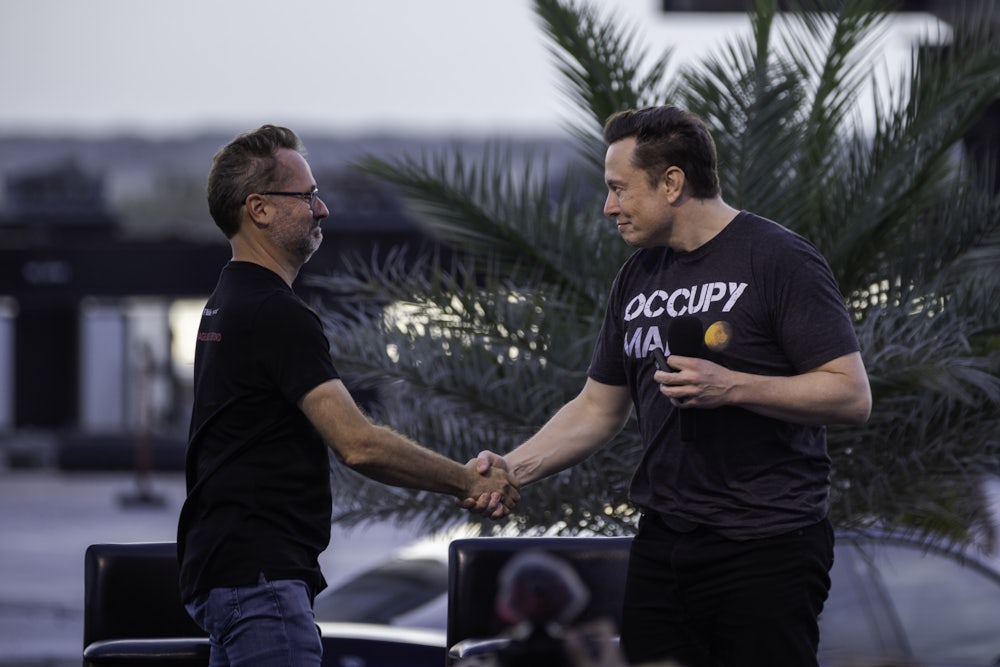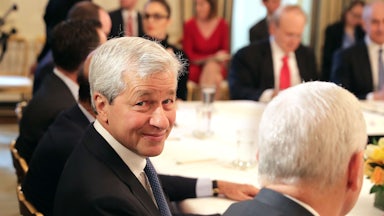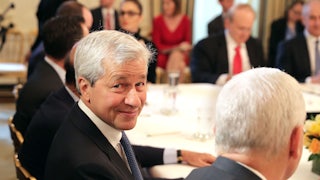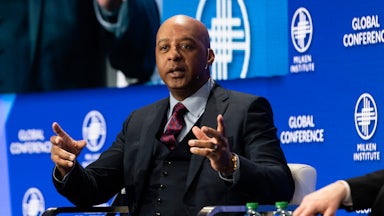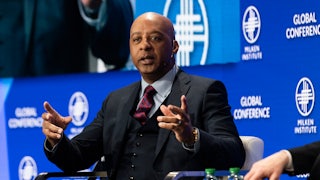How are the CEOs doing these days? Last time we checked in, the plutocrats in the executive suites were hard at work, securing further plunder through stock buybacks and access to the taxpayer teat. In return, they seeded the business press with fearful takes of perpetually soon-to-be-arriving recessions and slashed their workforces with layoffs. All the while, the ratio of CEO-to-worker pay kept on moving in the wrong direction.
It would be one thing if, alongside the exorbitant executive pay, the quality of American CEO-ing was going up. But these executives are making off with bigger bags of boodle despite their persistent incompetence: Media executives keep running their businesses into the ground, tech firms are laying people off because of vibes, the planes keep nearly crashing, and examples of insane eye-popping greed—like Rite-Aid’s decision to claw back severance paid out to laid-off workers on the same day they handed their CEO a $20 million bonus—keep on coming.
So it may come as no surprise that there’s a robust connection between the overindulged CEOs and the firms that are most flagrantly dodging their fair share of taxes. For a report released Wednesday, the Institute for Policy Studies teamed up with Americans for Tax Fairness to spelunk into the balance sheets at some of America’s best-known tax scofflaws between 2018 and 2022. What they found was pretty consistent: The firms took home high profits and lavished their top executives with exorbitant pay, all while stiffing Uncle Sam.
The excess is stunning. “For over half (35) of these corporations,” the study reports, “their payouts to top corporate brass over that entire span exceeded their net tax payments.” An additional 29 firms managed this feat for “at least two of the five years in the study period.” Eighteen firms paid a grand total of zero dollars during that five-year span, 17 of which were given tax refunds. All in all, the 64 companies in the report “posted cumulative pre-tax domestic profits of $657 billion” during the study period, but “paid an average effective federal tax rate of just 2.8 percent (the statutory rate is 21 percent) while paying their executives over $15 billion.”
Which firms are the worst of the worst? You can probably guess the company that tops the list because it’s the one run by The New Republic’s 2023 Scoundrel of the Year. During the five years of the study, Tesla took home $4.4 billion in profits as CEO Elon Musk carted off $2.28 billion in stock options, which, since his 2018 payday, have ballooned to nearly $56 billion—a compensation plan so outlandish that the Delaware Court of Chancery canceled it. Tesla has, during that same period of time, paid an effective tax rate of zero percent through a combination of carrying forward losses from unprofitable years and good old-fashioned offshore tax dodging.
It’s hard to match Tesla in terms of its rapaciousness, but the other nine firms on the IPS’s “Terrible Ten” include some household names: T-Mobile, Netflix, Ford Motor Company, Metlife, and Darden Restaurants (owners of Olive Garden); a trio of energy companies (Nextera, Duke Energy, First Energy); and the shining star of the 2008 financial crisis, bailout baby AIG.
If we exclude Tesla and Elon from the roster (which, honestly, seems fair given Musk’s off-the-charts villainy), we’re talking about firms that have raked in more than $120 billion in profit over that five-year span, while handing executives more than $3 billion in compensation. Meanwhile the highest tax rate applied to any of these firms is merely 2.2 percent; three have had a negative tax rate for the study period.
What sort of innovations have these CEOs wrought from this well-remunerated period? T-Mobile’s Mike Sievert presided over the Sprint merger that led to $23.6 million in stock buybacks and 5,000 layoffs. Netflix’s Reed Hastings poured $15 billion in profit into jacking up subscription rates. Nextera Energy has devoted $10 million in dark money in a “ghost candidate scheme” to thwart climate change candidates. Darden Restaurants has been fighting efforts to raise the minimum wage. Metlife has been diverting government money meant to fund low-cost housing into other, unrelated buckraking ventures. And some First Energy executives from the study period are embroiled in a corruption scandal that’s so massive that even Musk might find it to be beyond the pale.
While the five years that the IPS put under the microscope may feature some of the most flamboyant examples of this wretched excess, it’s important to remember that none of this happened in a vacuum—this widening gyre of inequality is decades in the making. As the IPS study notes, “When corporate taxes made up 21.8 percent of all federal revenue in 1965, the average CEO-to-median worker pay ratio was 21 to 1. By 2022, corporate tax receipts had fallen to just 8.7 percent of federal revenue and the average pay ratio had risen to 344 to 1.”
This came about in part because of boardroom decisions: As shareholders chased higher returns, CEOs have been increasingly rewarded for finding new and more creative ways to dodge paying taxes and engage in self-dealing. Policymakers are slowly catching up: The Inflation Reduction Act included a measure that imposes a 1 percent excise tax on stock buybacks, and the Biden administration has provided incentives for semiconductor firms to forgo buybacks if they want to receive government subsidies, a practice that can be applied to other industries. Democratic lawmakers Sheldon Whitehouse and Lloyd Doggett have co-sponsored the No Tax Breaks for Outsourcing Act, which would ensure that multinational firms “pay the same tax rate on profits earned abroad” as they do at home.
This is all on the ballot in November, by the way. Trump’s tax policies only added fuel to the stock-buyback fire, a blaze that Biden has signaled he wants to extinguish by levying even higher excise taxes on the practice. Perhaps this is why the CEOs are warming to the possibility of a Trump reelection. Which means that should the former president prevail in November, we’ll probably watch the yawning gap between CEO and worker pay widen even further.
